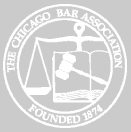 312-704-0771
312-704-0771
Blog Category: Creditor's Rights
How Can a Creditor Protect Their Rights During a Foreclosure?
How Can Creditors Avoid Violations of the Fair Credit Reporting Act?
How to Protect Creditors’ Rights When a Debtor Declares Bankruptcy
UPDATE: What Are the Statutes of Limitations for Debts in Illinois?
How Can Creditors Protect Their Rights in a Chapter 13 Bankruptcy?
What Property is Exempt From Illinois Bankruptcy Proceedings?
What You Need to Know About the President’s Plans for Credit Reporting
Illinois Reducing Interest Rate, Revival Deadline on Consumer Debt Judgments
Technicalities Do Not Quash Garnishment in Debt Collection Case
Illinois Enacting New Rules for Credit Card Companies, Debt Buyers
Illinois Supreme Court Sides with Borrower in Foreclosure Case
Successor Liability Can Hold Companies Accountable for Debts






